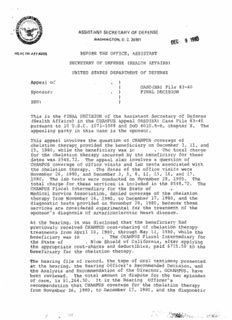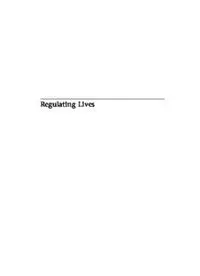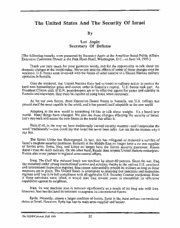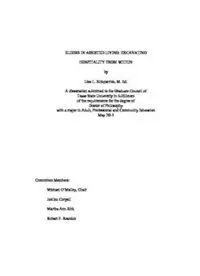
Why Big Fierce Animals Are Rare PDF
Preview Why Big Fierce Animals Are Rare
W hy B ig F ierce A n im als A re R are Paul C olinvaux P enguin S cience Why areb ig fierce animals rare? Why do birds sing in the morning ? Why is the sea blue? What accounts for the immense variety of plant and animal species ? A zoologist takes an entertaining look at the world around him, pondering the answers provided by scientific research and describing nature in a way that will lead the curious to observe their surroundings with fresh eyes. Written in a clear, graceful style, each chapter explores a separate theme, usually beginning with a paradox that arose in the literature of a generation or so ago and ending with a report on the current state of our knowledge. Whether he discusses the groups into which animals fall by size, the reasons why oceans harbour tiny plants, or the behaviour of the wolf spider, Paul Colinvaux brings to his subject both profound knowledge and an enthusiasm that will encourage a greater understanding of our environment and of the efforts of those who seek to preserve it. *A vivid picture of how the natural world works... an excellent and very readable book* -v * —Nature Cover illustration by Carolyn Scrace PENGUIN ISBN 0-14-013565-0 Science Nature U.K. £7.99 AUST. $16.95 (recommended) 780140 135657 PENGUIN BOOKS WHY BIG FIERCE ANIMALS ARE RARE Paul Colinvaux was educated at University College School in Hampstead, Jesus College, Cambridge, and Duke University, North Carolina. He is now a Senior Scientist and Professor at the Smithsonian Tropical Research Institute in Panama, and has previ ously worked at the Ohio State University, Yale University, Queen’s University in Belfast, the University of Washington and Oxford University. Colinvaux’s researches into the environment of the last ice age have let him hunt for ancient lakes in both Arctic and Equatorial latitudes, his current work being in the Amazon basin, Panama, Arctic Russia, and Siberia. He also dives on coral reefs as field assistant to his scientist wife, Dr Llewellya Hillis. His hobbies are rowing, woodworking, writing and exploring. His other books are Introduction to Ecology (1973), The Fates of Nat ions (1980) and Ecology 2 (1993). Paul Colinvaux Why Big Fierce Animals Are Rare § Penguin Books PENGUIN BOOKS Published by the Penguin Group Penguin Books Ltd, 27 Wrights Lane, London W8 5TZ, England Penguin Books USA Inc., 375 Hudson Street, New York, New York 10014, USA Penguin Books Australia Ltd, Ringwood, Victoria, Australia Penguin Books Canada Ltd, 10 Alcorn Avenue, Toronto, Ontario, Canada M4V 3B2 Penguin Books (NZ) Ltd, 182-190 Wairau Road, Auckland 10, New Zealand Penguin Books Ltd, Registered Offices: Harmondsworth, Middlesex, England First published by George Allen & Unwin 1980 Published in Pelican Books 1980 Reprinted in Penguin Books 1990 3579 10 864 Copyright © Paul Colinvaux, 1980 All rights reserved Printed in England by Clays Ltd, St Ives pic Set in Monotype Times Except in the United States of America, this book is sold subject to the condition that it shall not, by way of trade or otherwise, be lent, re-sold, hired out, or otherwise circulated without the publisher’s prior consent in any form of binding or cover other than that in which it is published and without a similar condition including this condition being imposed on the subsequent purchaser Contents Preface page ix Prelude 1 1 The Science That Reasons Why 3 2 Every Species Has Its Niche 8 3 Why Big Fierce Animals Are Rare 15 4 The Efficiency of Life 28 5 The Nation States of Trees 41 6 The Social Lives of Plants 55 7 Cycles: A Lesson from Farming 65 8 Why the Sea Is Blue 72 9 The Ocean System 79 10 The Regulation of the Air 86 11 The Curious Incident of the Lake in the Now Time 96 12 The Succession Affair 104 13 Peaceful Coexistence 120 14 What Hunting Animals Do 133 15 The Social Imperatives of Space 144 16 Why There Are So Many Species 162 17 The Stability in Nature 176 18 The People’s Place 187 Postlude 206 Ecological Reading 210 Index 217 Preface Ecology is not the science of pollution, nor is it environmental science. Still less is it a science of doom. There is, however, an overwhelming mass of writings claiming that ecology is all of these things. I wrote this book in some anger to retort to this literature with an account of what one practising ecologist thinks his subject is really about. I feel fervour for the elegance of the Darwinian explanations we find for natural phenomena. I take the opportun ity to brand as nonsense tales of destroying the atmosphere, killing lakes and hazarding the world by making it simple. I wrote a textbook before I wrote this. With the textbook in press, I spent a quiet year as a Guggenheim Fellow thinking out the social implications of ecological knowledge. Then I wrote a series of articles for the Yale Review (© Yale University), cul minating in a paper describing an ecological model of human history. The pedigree of this book, therefore, is: out of text; by Guggenheim and the Yale Review. To the Guggenheim Founda tion and the editor of the Yale Review, I give thanks. My own research has been on communities of the past and the history of climatic change as it can be reconstructed from fossils in the mud of ancient lakes. I have inquired into the way of life of the First Americans on the ancient plainsland now drowned under the Bering Sea and into the environmental history of the Galapagos Archipelago. Most other subjects I report at second hand, though by now many of my summaries have been through the reviewing process of a text in use for several years. This manuscript was reviewed by Dr R. H. Whittaker and Dr H. Horn. It would be hard to find two other reviewers who could point out one’s errors so nicely without wounding one’s feelings. My gratitude to them both. Where I still err it is probably because I was wilful in the face of their advice. To keep my prose as uncluttered as possible I have refrained from references and footnotes. All the main studies and argu ments I describe, however, have their sources given in the section Preface at the end called “ecological reading.” Most can also be found written up in the half-dozen texts I cite in that section. I recently had the pleasant task of reading into a tape-recorder from Darwin’s autobiography, acting the voice of Darwin for a colleague’s production. As I was captured by the part, I could feel the thoughts of that greatest of all ecologists in the room. It is in Darwin’s writings that one finds the true roots of ecology. Darwin did not write of pollution and crisis but of how the world worked; of coral reefs and species; of expressing emotions; of fertilising orchids and natural selection. Ecologists still ponder these things, and in Darwin’s way. Columbus, Ohio PAUL COLINVAUX
The list of books you might like

What Happened to You?

A Thousand Boy Kisses

As Good as Dead

Can’t Hurt Me: Master Your Mind and Defy the Odds

Ernst Heiss - Bibliographie, Liste der beschriebenen und dedizierten Taxa1

Plan 2 CS Generator

by Christopher Gardner-Thorpe. Page 55 - Evolve360

c 2009 by Azeem Sarwar. All rights reserved. - ResearchGate

C. OEC 9

Chocolat / Шоколад

Greek Government Gazette: Part 1, 2006 no. 94

Filosofia for dummies

PUCCINIA LASERPITII (UREDINALES), A NEW SPECIES FOR POLAND
![ERIC ED388469: [Rural Education.] book image](https://cdn.pdfdrive.to/media/content/thumbnails/64fb2489-a0ba-4585-b421-c85d2247abe9.webp)
ERIC ED388469: [Rural Education.]

Blue Sky Solar Racing

A Study of Meme Propagation: Statistics, Rates, Authorities, and Spread

Regulating Lives: Historical Essays on the State, Society, the Individual, and the Law

DTIC ADA495940: The United States and the Security of Israel

Cage Aquaculture

Betty Grier by Joseph Laing Waugh

Aplicação da metodologia AIM-CID no conteúdo da disciplina

Administrative challenges facing the Social Security Administration : hearing before the Committee on Finance, United States Senate, One Hundred Ninth Congress, second session, March 14, 2006


